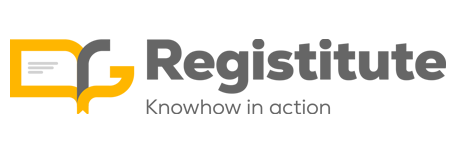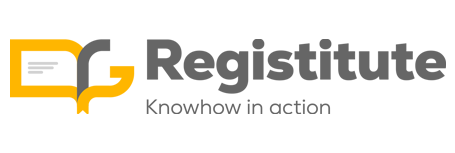
In the rapidly evolving world of healthcare, medtech medical devices are redefining how patients receive care and how clinicians deliver services. From wearable monitoring systems to complex diagnostic technologies, the medtech industry is pushing boundaries and unlocking possibilities that were once considered science fiction. These innovations not only improve patient outcomes but also optimize workflows, reduce hospital stays, and lower healthcare costs. Medtech medical devices now span every aspect of patient care, including prevention, diagnosis, treatment, and rehabilitation.
As innovation accelerates, so do regulatory expectations. For any company operating in the medtech medical devices field, balancing compliance, market readiness, and innovation is no longer optional — it’s essential. Regulatory bodies across different regions demand extensive documentation, risk evaluations, and proof of performance, making the pathway to market increasingly complex.
What Are Medtech Medical Devices?
Medtech medical devices refer to a broad range of tools, machines, and software developed to assist in the diagnosis, monitoring, and treatment of medical conditions. These include:
- Diagnostic imaging systems (e.g., MRI, CT scans)
- In-vitro diagnostic (IVD) tools
- Smart wearable devices and remote monitoring solutions
- Implantable devices like pacemakers or neurostimulators
- Advanced surgical instruments and robotic surgery systems
- Mobile health (mHealth) applications
- Software as a Medical Device (SaMD)
These devices are engineered through a mix of biomedical engineering, digital innovation, and clinical insight. They must meet strict safety and efficacy standards before being released to market, as they directly impact patient health and clinical decision-making. The sophistication of medtech solutions continues to evolve, integrating AI, machine learning, and cloud computing.
Global Market Outlook for Medtech Medical Devices
The global medtech medical devices market is projected to exceed $800 billion by 2030, driven by factors such as an aging population, the rise of chronic diseases, and expanding access to healthcare in emerging markets. The MENA region, in particular, is seeing rapid growth due to investments in healthcare infrastructure, public-private partnerships, and supportive government reforms.
Saudi Arabia and the UAE are leading the way in digital health initiatives and device regulation modernization, creating fertile ground for innovation. Egypt and North African countries are also improving regulatory capacity, making them increasingly attractive for foreign medtech manufacturers.
To capitalize on this growth, companies must understand each region’s unique regulatory and commercial environment. Localization and compliance are essential to securing a strong foothold.
Regulatory Challenges Facing Medtech Companies
Despite the promising growth, navigating regulatory frameworks remains one of the biggest challenges for medtech medical devices manufacturers. Regulatory agencies such as the SFDA (Saudi Arabia), EDA (Egypt), and EMA (Europe) are enforcing stricter regulations around device classification, clinical evaluation, and post-market monitoring.
Key challenges include:
- Understanding device classification and associated regulatory pathways
- Preparing technical documentation that complies with global and local standards
- Managing translations and labeling requirements
- Establishing local representation where required
- Conducting or registering clinical trials
Companies that fail to meet these requirements may face launch delays, product recalls, or regulatory penalties. Proactive planning and expert regulatory guidance are essential to overcoming these barriers.
The Role of Market Access in Medtech Success
In addition to compliance, market access strategies determine the commercial viability of medtech medical devices. Market access involves navigating pricing, reimbursement systems, distributor networks, and healthcare provider engagement. Each MENA country has different requirements for public and private sector access, and understanding these nuances is key to maximizing commercial success.
A comprehensive market access strategy includes:
- Early pricing and reimbursement planning
- Engagement with key stakeholders, including payers and health authorities
- Development of health economic value propositions
- Partnership with local distributors for supply chain efficiency
By integrating market access planning with regulatory strategy, manufacturers can reduce time-to-market and increase product uptake.
Innovation Trends Shaping the Future of Medtech
The medtech medical devices landscape is rapidly transforming due to emerging technologies. Key trends include:
- Artificial Intelligence (AI) Integration
AI is revolutionizing diagnostic tools by enabling predictive analytics and faster image interpretation. AI-powered devices can assist radiologists, monitor patient vitals in real time, and even personalize treatment protocols.
- Software as a Medical Device (SaMD)
SaMD offers standalone software solutions that perform medical functions without traditional hardware. These tools are increasingly used in chronic disease management, mental health support, and clinical decision-making.
- Personalized and Wearable Devices
Personalized medicine is a growing focus, and devices tailored to individual patient needs are becoming mainstream. Wearables now offer clinical-grade data for chronic disease monitoring, sports medicine, and rehabilitation.
- Sustainability in Medtech
Eco-conscious design is gaining importance. Manufacturers are using recyclable materials, reducing energy usage in production, and implementing greener packaging strategies to align with global sustainability goals.
- Cloud-Based Healthcare Platforms
With the explosion of connected devices, secure cloud storage and data integration have become critical. Cloud platforms support remote monitoring, enhance interoperability, and facilitate regulatory traceability.
Localization: The Key to Regional Market Success
Effective localization is critical for market success in the MENA region. Localization goes beyond translation; it involves:
- Customizing instructions for use (IFUs) in local languages
- Adapting packaging, labeling, and artwork to meet local norms
- Registering products through local authorities such as the SFDA or EDA
- Aligning clinical trials and product claims with cultural and medical expectations
Without localization, companies risk non-compliance or poor market reception. Culturally sensitive product positioning and language adaptation improve both regulatory outcomes and customer trust.
The Importance of a Trusted Regulatory Partner
Managing regulatory requirements and market access simultaneously can be overwhelming. Partnering with a regulatory and market access expert offers significant advantages. A trusted partner can:
- Oversee product registration and regulatory submissions
- Provide strategic guidance for SaMD, IVDs, and other medical devices
- Manage local representation and authorized agent services
- Facilitate clinical trial execution and monitoring
- Ensure ongoing post-market compliance and surveillance
Outsourcing these functions allows manufacturers to focus on innovation while reducing internal resource strain and minimizing approval timelines.
Digital Tools Enhancing Regulatory Efficiency
Digital tools now play a central role in managing the regulatory lifecycle of medtech medical devices. These tools streamline compliance by offering:
- Document automation and standardized templates
- Real-time updates on regulation changes
- Audit tracking and validation logs
- E-submission capabilities for multiple markets
Advanced platforms help eliminate manual errors, reduce operational costs, and ensure consistent regulatory performance across diverse markets.
The medtech medical devices industry is at a critical juncture, with opportunities expanding alongside rising regulatory expectations. Success requires more than technological innovation; it demands in-depth knowledge of market access, localization, and compliance strategies.
For manufacturers looking to grow in the MENA region, aligning with specialized regulatory partners, adopting digital tools, and planning a holistic go-to-market strategy are essential steps.
Whether you’re launching a new device, adapting existing products to local markets, or exploring digital health innovations, now is the time to invest in strategic execution.
Looking to navigate the complex world of medtech in the MENA region? Explore how expert guidance can streamline your regulatory journey and accelerate your market success.
At Registitute, we specialize in empowering companies across the medtech medical devices sector. From product registration and local representation to compliance consulting and digital tools, our services are designed to support every step of your journey.
Contact us today to discover how we can help bring your medtech innovations to market faster, safer, and more efficiently across the MENA region.




